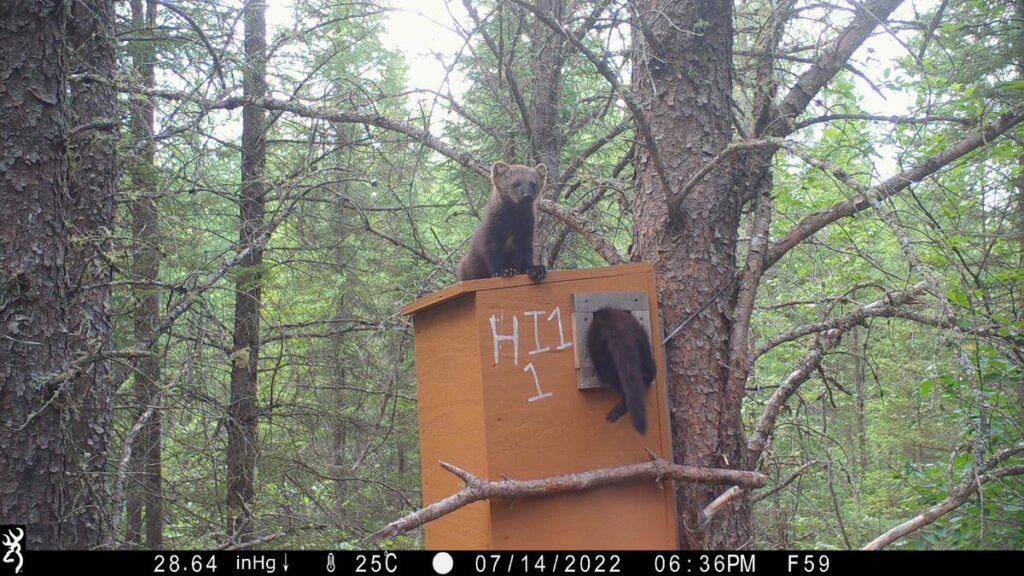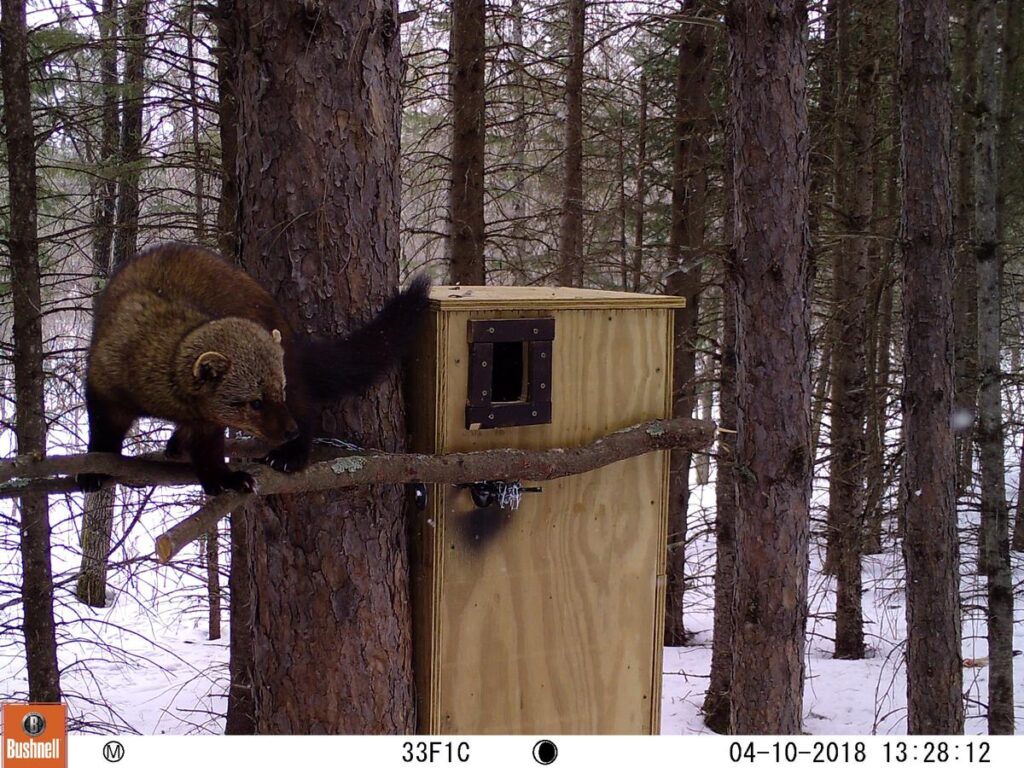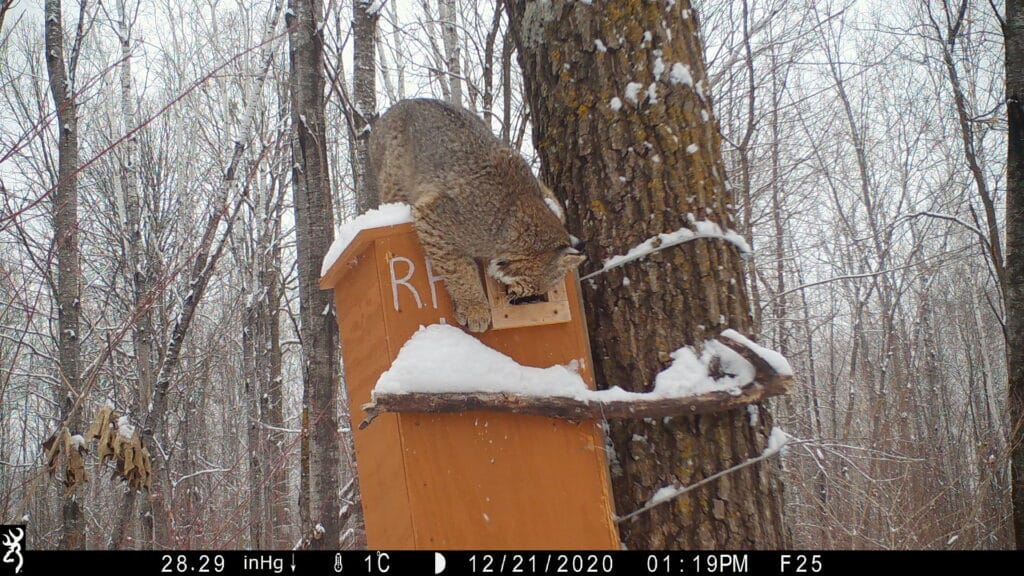
Researchers at the University of Minnesota recently reported on a four-year effort to study the possibility of providing more nesting opportunities for the elusive forest predators called fishers. Unfortunately the project’s primary goal was unsuccessful but the report provides several interesting and important pieces of information.
Fishers are the largest members of the weasel family found in Minnesota. State populations have declined since 2000 from approximately 16,000 animals to about 7,000 today. Biologists point to a few possible factors, including habitat loss and increased competition.
Only two percent of northern Minnesota has the large, old aspen trees that are big enough and rotted out to provide a cavity where fishers raise their kits. Aspen is the most common forest type in the state, and a popular tree for the lumber industry. But aspen are typically logged at 40 to 60 years of age, rarely growing big enough to serve fishers.

Natural nurseries
Wondering if humans could help restore balance, scientists placed more than 100 large wooden boxes in areas where fishers had recently been documented, with a variety of sensors to track usage. A camera was pointed at the box, sticky tape was put at the entrance to collect hair samples and provide DNA information, and a thermometer was placed inside.
While the boxes became busy spots for many species of animals, including fishers, there was little evidence any females used them to give birth and raise kits.
“Maybe the box location wasn’t where the fishers wanted them, or they had better natural cavities available,” said lead researcher Michael Joyce of the Natural Resources Research Institute. “We put the boxes in areas with recent presence of fishers, but with their population decline they might not have been there anymore.”
The cameras did capture females using the boxes for temporary stays with their kits. Females also used them to defend themselves during mating, allowing the females to be more selective about their mate. Many other animals showed up in far greater numbers, including martens, squirrels, bears, and bobcats.

Cat fight
Bobcats are not exactly friends of fishers. Not only are the felines one of fishers’ most feared predators, the two animals overlap in hunting habitat and prey, though they prefer different aged forests for nesting. As young aspen forests have become more common, bobcats have thrived, while fishers have found fewer places to nest.
“Bobcats tend to do well in young forest, while fishers prefer old forests – but there are forest conditions that they both use, especially where they are hunting for shared prey,” said Joyce.
While fisher numbers have fallen in half in the past two decades, Minnesota’s bobcat population is believed to have tripled over the past 40 years.
Even without nesting success, the researchers report helpful findings. They have also placed GPS tracking collars on bobcats and fishers in the region to better understand where the two species live, hunt, and raise young. That study will continue through 2024. The thermometers placed in the nest boxes also detected a unique temperature pattern that could be used to detect fishers in future studies without the need for cameras.
More information
- Minnesota Fisher Den Box Project – Natural Resources Research Institute
- Finicky fishers bypass boxes for raising kits – Natural Resources Research Institute
- Fisher (Martes pennanti) – Minnesota DNR
- Fisher Den Boxes – Izaak Walton League, Duluth

